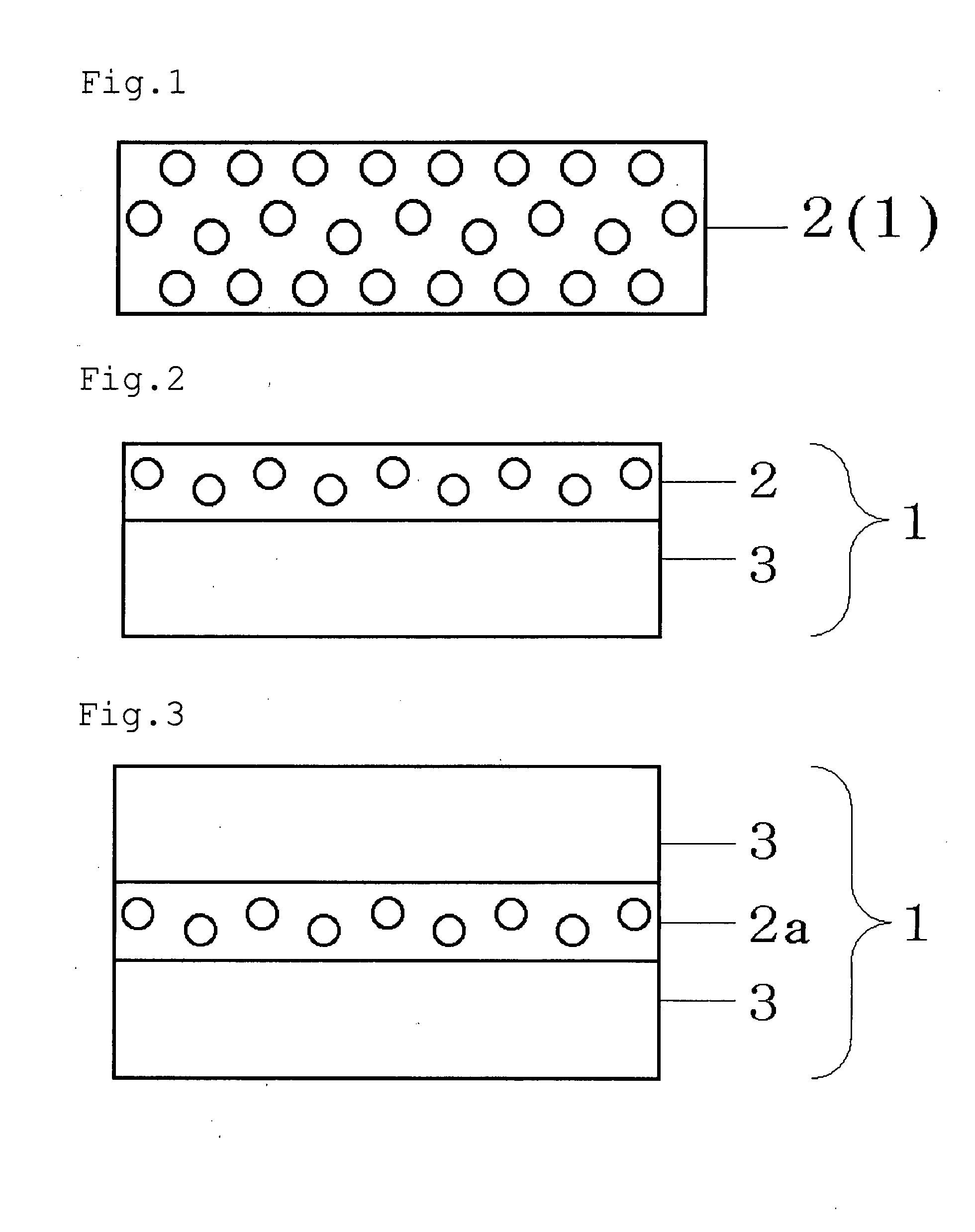Light diffusing body and a transmission type screen
a transmission type and light diffusing technology, applied in non-linear optics, instruments, transportation and packaging, etc., can solve the problem of image appearance as colored, achieve the effect of reducing the shift of the wavelength of scattering light, high cost, and same scattering efficiency
- Summary
- Abstract
- Description
- Claims
- Application Information
AI Technical Summary
Benefits of technology
Problems solved by technology
Method used
Image
Examples
example 1
[0060]On one surface of a transparent polymer film having a thickness of 188 μm (Lumirror T60: Toray Industries, Inc.), a coating solution for light diffusing layer having the following composition was applied by the bar coating method and curing at 120° C. for 5 minutes to form a light diffusing layer having a thickness about 15 μm. Then, on the light diffusing layer an ultraviolet light curable acrylic type adhesive (refractive index of 1.50) was further applied and dried, and a transparent polymer film was adhered to obtain a light diffusing body. The refractive index of the cured resin excluding particles in the following formulation was 1.519. Further, a particle diameter distribution of styrene micro-particles was measured and, according to Equation 1, the value (effective scattering efficiency E) was obtained for each center wavelength in the wavelength ranges of blue, green and red lights, by dividing the sum of scattering cross-sections of all spherical micro-particles cont...
example 2
[0061]A light diffusing body of Example 2 was obtained in the same manner as that of Example 1 except that the coating solution for light diffusing layer of Example 1 was replaced by the following coating solution for light diffusing layer.
Acrylic resin14.25 parts (Acrydic A-807: Dainippon Ink & Chemicals, Inc.)(Solid content: 50%)Styrene micro-particles20 parts(Technopolymer SBX-8: Sekisui Plastics Co., Ltd.)(Coefficient of variation: 34.83%, average particlediameter: 8.9 μm, refractive index: 1.59)Diluting solvent40 partsCuring agent2.79 parts (Takenate D110N: Mitsui Chemicals Polyurethanes, Inc.)
PUM
| Property | Measurement | Unit |
|---|---|---|
| Fraction | aaaaa | aaaaa |
| Fraction | aaaaa | aaaaa |
| Fraction | aaaaa | aaaaa |
Abstract
Description
Claims
Application Information
 Login to View More
Login to View More - R&D
- Intellectual Property
- Life Sciences
- Materials
- Tech Scout
- Unparalleled Data Quality
- Higher Quality Content
- 60% Fewer Hallucinations
Browse by: Latest US Patents, China's latest patents, Technical Efficacy Thesaurus, Application Domain, Technology Topic, Popular Technical Reports.
© 2025 PatSnap. All rights reserved.Legal|Privacy policy|Modern Slavery Act Transparency Statement|Sitemap|About US| Contact US: help@patsnap.com



